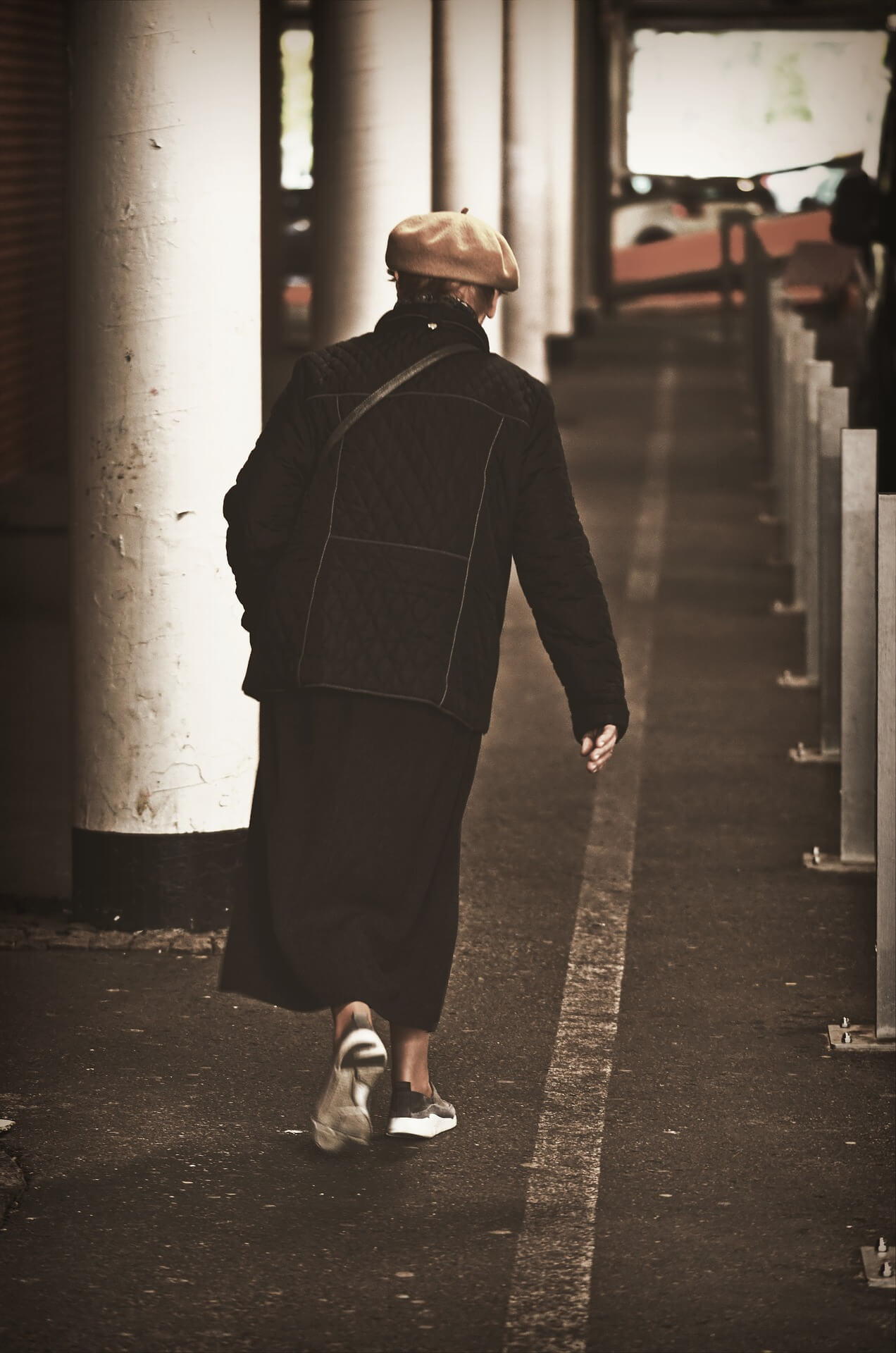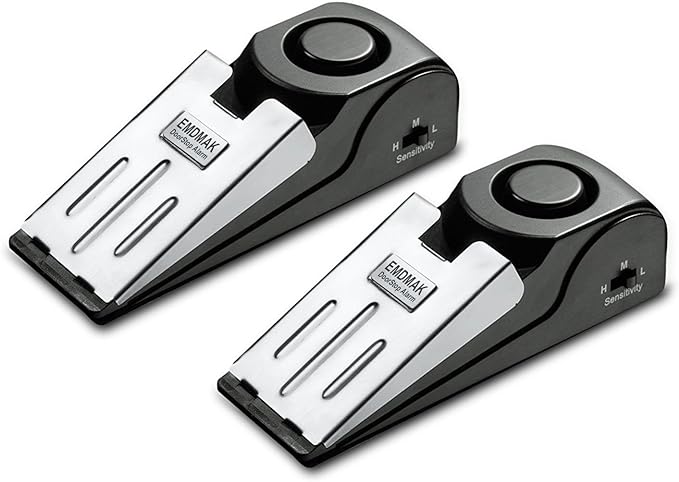Alzheimer’s Wanderer: How to Keep Them Inside!
The Alzheimer’s wanderer is when someone with Alzheimer’s Disease walks around aimlessly.
Some people will walk non-stop until they wear themselves out.
Three out of four people with this disease will wander at some point.
Alzheimer’s wanderers are not much of a problem unless they try to get outside.
It is dangerous for someone with moderate to severe Dementia to be outside alone. They may live in areas with extreme weather conditions, and getting lost outside for an extended period could result in injury.
Wanderers often lose their way and cannot find their way home. As a result, they may wander into the wrong area. If this happens, they may become a victim of a crime.

Alzheimers Wandering Reasons
Why do they wander? There could be any number of reasons. They may be looking for a bathroom or thirsty or hungry.
Sometimes they have glimpses of their past and may think it is time to go to work.
I had a woman who woke up many mornings thinking she had to go to school and would say she had to hurry and get ready.
School for her was 70 years ago, yet that memory was very vivid. So often, when they try to get outside, it is related to past work memories.
I have found that the distraction technique works best in those situations. I would tell the woman who had to go to school that it was Saturday and there wasn’t any school that day.
Most of the time, she accepted that answer and would move on to something else.

The Truck Driver
Another example is a retired truck driver who insisted he had to “get on the road.” His wife let us in on her secret that always worked.
She told him he was out of hours. After that, you could see him relax, and he would find something else to do.
Distraction techniques don’t always work, but it has always been the first thing I try.

Hide the exits
Often, camouflage will work. You can also hide the exits. I have always found this to be a significant deterrent. I have worked in a couple of closed Alzheimer’s units, and they used posters similar to the one I found on Amazon.
There are many different styles of door coverings. I recommend trying a door cover for any high-risk doors. Especially if you have a family member with Dementia who keeps trying to get outside or into a room, you don’t want them to go in.
Vinyl Door Cover
The door cover helps hide the door from someone with Dementia. You can find it on Amazon HERE.
A second lock at the top or bottom of the door can also be helpful since most people with the disease look at eye level.
Another technique I have heard of is placing a black mat on the floor in front of the door. Unfortunately, some people with dementia will interpret it as a hole in the floor and won’t step on it.
Stop Sign
There are ways to make your house safer. Doors are always a problem. There are several ways to help prevent them from opening the door.
Occasionally, a stop sign on the door will work. We used these in a nursing home where I worked. I was surprised at how well they worked. The nursing home had the stop signs attached to mesh and velcro, which crossed an open doorway. The patients with Dementia did not go through them. Instead, they would turn around and go the other way. You can find it on Amazon HERE.
Alzheimer’s wandering is probably the biggest worry for most caregivers of a family member in the middle stage of Alzheimer’s.
Anything to help ease the worry and keep your loved one safe will make your life less stressful.
Many different types of alarms are on the market to tell you when a door opens. For example, there are magnetic sensor door alarms; these alarms consist of 2 pieces. One piece connects to the door, and the other attaches to the frame—the pieces touch. When the door opens, the two pieces separate, and the unit alarms.
They work well on doors, cabinets, and windows. You can find the sensor alarm HERE.
Another helpful alarm goes under the door and warns when the door opens. It is a Security Door Stop Alarm. This alarm will sound when the door opens. This one is portable. You can move it to a different door or take it to another house if you visit somewhere. You can find it HERE.
I have added a couple here for you to check out. The alarms are not only pretty reasonable but also easy to use.
I recommend using as many of the prevention methods as possible.
Before they get too far into the disease, you should put precautions into place. It is a good idea to make sure the person with Dementia has identification on them in case they ever get outside. A bracelet with their name and emergency contact on it is a necessity.
Don’t rely on a wallet or purse. Some people with Dementia can’t remember their names. So you need to ensure that if they get outside that, someone will be able to identify them and contact you. You can find the Dementia bracelets HERE.
Technology
Technology has come a long way, and there are several ways to monitor your loved one. I use the 360 app on my phone. It is easy to use and allows the whole family to see where each other is as long as they have their phone with them.
Others use tracking devices that can be placed in a wallet, purse, or shoes. They are called GPS trackers. I have not used them, but I have heard many caregivers rave about them. When looking at GPS trackers, you need to look at a couple of things to make sure it will do what you want.
1. Make sure it works for your type of phone. Air tags are for iPhones, but there are other brands for Android phones.
2. Check the distance it covers. Some of them are only good for 250 – 400 feet.
3. Check the battery life.
4. Check the subscription price; some of them come with a very high monthly subscription fee.
I have added the link for one with good reviews here. It isn’t as small as some of the others, but it has a long battery life (14 days), a small subscription fee, it does not have a location limit, and it has an emergency button on it. You can find the GPS tracker HERE.
Your loved one will probably wander at some point. It is a phase that most people with this disease go through. One of the best things you can do is to have an area where they can wander safely in your home.
Shelter of Calm:
Your Guide Through Dementia's Storm!
Is Dementia's chaos stealing your peace?
We're here to restore the calm, empowering you to confidently face each challenge.
Take the first step towards transformation now.

If you can, rearrange the furniture to give them plenty of walking room. Create a walking path in the house if you have someone who likes to walk.
Remember, the more energy they get rid of during the day, the better they will sleep at night, and so will you.

What is a Silver Alert?
If your loved one wanders off, please call the police and ask them to initiate a SILVER ALERT immediately!
A Silver Alert is like an AMBER Alert, but instead of for children, it is for someone with cognitive issues.
A Silver Alert is a public notification system in the United States that broadcasts information about missing persons, especially senior citizens with Alzheimer’s, another type of dementia, or other mental disabilities, to aid in locating them.
Most states participate in the Silver Alert or have a similar system to help locate missing people with Alzheimer’s.
It is imperative to notify the authorities right away. The sooner a search is started, the greater the chance of finding them unharmed.
Conclusion
In conclusion, dealing with Alzheimer’s wandering can be a challenging aspect of caregiving, but there are practical measures you can take to enhance safety. Whether using distraction techniques to redirect their focus or implementing physical barriers like door covers and alarms, caregivers have various tools at their disposal.
Embracing technology, such as GPS trackers and monitoring apps, can offer additional peace of mind. It’s crucial to proactively put precautions in place, including ensuring the person with dementia carries identification. Creating a safe wandering space at home and staying vigilant can significantly reduce the risks.
Remember, if a loved one does wander off, don’t hesitate to contact the authorities promptly and initiate a Silver Alert—a crucial step in increasing the chances of a safe and swift reunion. Stay informed, stay prepared, and most importantly, stay connected with the resources and support available to you as a dedicated caregiver.
The Dementia Caregiver Blog Library
Activities, Advanced Directives, Agitation, Apathy, Approach, Apps for Caregivers, Basic Caregiving, Bathing, Bathroom Safety, Caregiver Burnout, Caregiver Compassion, Caregiver Emotions, Caregiver Help, Caregiver Loneliness, Caregiver Support, Cold & Flu Season, Communication Challenges, Dehydration, Dementia Complications, Dementia Doctors, Dementia Safety Home, Dementia Types, Dementia-Friendly, Dressing Issues, Driving Safety, Eating Problems, Fall Prevention, Family Help, Finances, Guns & Dementia, Harm Prevention, Healthcare, Help at Home, Hiding Dementia, Holidays, Hospice, Hospital Stay, In-Between Stage, Kitchen Safety, Laughter, Legal Healthcare, Marijuana use, Medication Tips, Music, Nutrition, Pain, Patience, Poop Problems, Relationships, Reminiscing, Routine, Safety, Sense of Purpose, Shadowing, Sleep Issues, Stages of Dementia, Sundowning, Television, Time Travel, Traveling, Toileting, Wandering
Exploring Caregiving Tools & Resources? Don't Forget to Check Out My Resource Page! 🌟

Hi, I’m Larea, a Certified Dementia Specialist and Registered Nurse with 30 years of hands-on experience helping dementia patients in various settings, from hospitals to nursing homes and hospice. Drawing on personal experiences with my family members and patients over the years, I’m here to help guide you on your caregiving journey.





